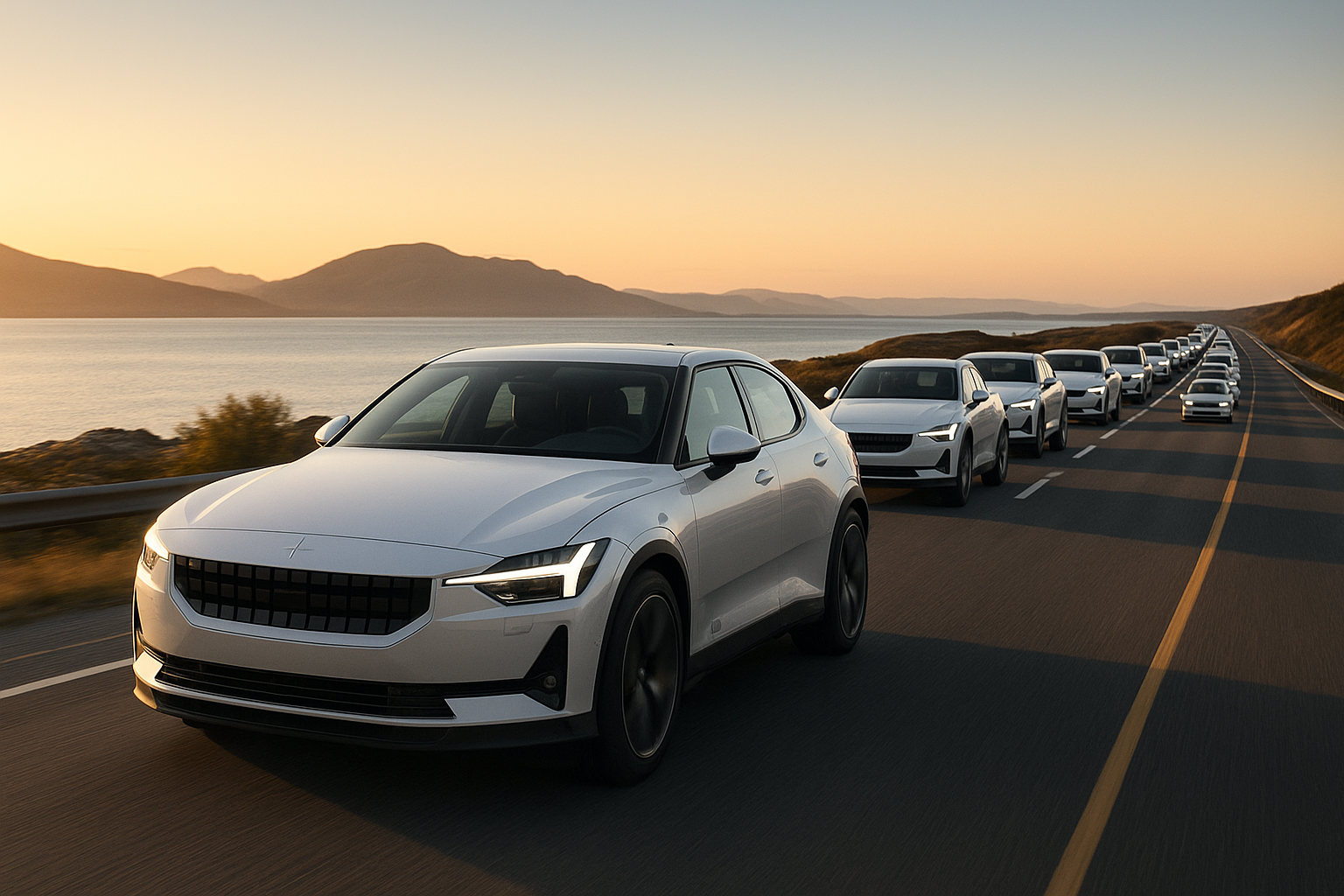In a quarter where most electric vehicle makers are spinning their wheels or worse, Polestar has quietly become something of an outlier. The Swedish-Chinese luxury brand delivered 18,049 vehicles between April and June, marking a 38% year-over-year increase that feels almost rebellious in today's cooling EV climate.
Not that 18,049 vehicles will have traditional automakers quaking in their boots. That's basically a rounding error for Toyota's quarterly Corolla sales. But context matters here.
While Tesla's deliveries slipped and numerous EV startups have either scaled back projections or face existential crises, Polestar seems to have found its lane. And it's widening.
I've been tracking Polestar since its 2017 launch as a standalone brand, and what strikes me is how the company has carved out an interesting middle space in the premium EV landscape. They're neither a legacy luxury brand desperately trying to prove electric credentials, nor are they a plucky startup learning the brutal realities of automotive manufacturing the hard way.
"We're seeing stronger-than-expected demand across our markets," a Polestar spokesperson told me last week at a product demonstration in New York. When I pressed about specific customer demographics, they acknowledged that many buyers are coming from premium German brands rather than other EV makers. Interesting.
The company's positioning makes sense if you think about it. Polestar leverages Volvo's engineering heritage and manufacturing expertise (the companies share a parent in Chinese automaker Geely) while maintaining a focused, electric-only ethos that appeals to buyers seeking something distinctive.
Look, the broader EV market is in an awkward adolescent phase. Early adopters have largely converted, but mainstream buyers remain hesitant. High interest rates haven't helped the already premium price points of most electric offerings, and America's charging infrastructure, while improving, still causes range anxiety for the uninitiated.
Against this backdrop, Polestar's growth suggests it's expanding its customer base rather than simply riding an industry-wide wave. That's... significant.
The Polestar 2 sedan accounts for most of these deliveries, though the Polestar 3 SUV has started reaching customers in some markets. Having driven both vehicles (the 3 only briefly on a closed course), I can attest they offer a distinctly Scandinavian take on luxury—minimalist yet premium, focused on sustainability without the hair-shirt feeling some eco-conscious vehicles convey.
Should we maintain perspective? Absolutely. Ford sells more F-150s before lunch on a good Monday than Polestar delivered throughout the entire quarter. And profitability? That's still the white whale for most EV-only manufacturers.
But in a market where the prevailing narrative has shifted from "EVs are the inevitable future" to "EV adoption is stalling," Polestar's contrary trajectory offers an interesting counterpoint.
The real test begins now. Can they maintain momentum as they expand their product lineup and enter new markets? Will their Swedish-Chinese identity prove appealing or confusing to luxury buyers? And how will they navigate the transition from serving early adopters to attracting the volumes necessary for sustainable profitability?
For the moment, though, in the challenging EV landscape of 2023, a 38% sales increase is enough to warrant one of those subtle Swedish nods of approval. You know the one—not quite a smile, but definitely not a frown.




